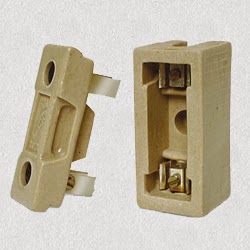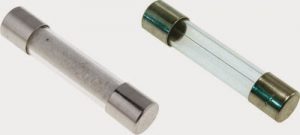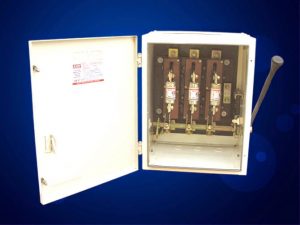Fuse is a piece of wire of a material with a very low melting point. When a high current flows through the circuit due to Overloading or a Short circuit, the wires get heated and melts. As a result, the circuit is broken and current stops flowing.
In electronics and electrical engineering, a fuse is a type of low resistance resistor that acts as a sacrificial device to provide overcurrent protection, of either the load or source circuit.
Type of Fuse
1. Expulsion fuse
2. Rewirable or kit-kat fuse
3. Cartridge fuse
4 Drop-out fuse
5. liquid fuse
6. Open fuse
7 Striker fuse
8. Switch Fuse
9. HRC fuse
1. Expulsion fuse
2. Rewirable or kit-kat fuse
3. Cartridge fuse
4 Drop-out fuse
5. liquid fuse
6. Open fuse
7 Striker fuse
8. Switch Fuse
9. HRC fuse
Basically, use 3 type of fuse
1. Rewirable or Kit-kat fuse
2. Cartridge fuse
3. Switch Fuse
Rewirable or Kit-kat fuse

Rewirable fuse is also known as KitKat fuse. It is a simple reusable fuse used in the houses, offices and in the protection of outdoor distribution transformers. It is a fully enclosed type fuse and is available in a wide range of ratings. The fuse when blown out can be reused after replacing the fuse element and the circuit can be restored quickly and easily. Renewable fuses are simple in construction and operation but less reliable than HRC fuses and other fuses.
Cartridge fuse
Cartridge fuses are used to protect motors and branch circuits where higher amps or volt ratings are required. They are available in a wide variety of sizes, amp and volt ratings up to 600Vac and 600 amps. Cartridge fuses are used extensively in commercial, industrial and agricultural applications as well as residential fuse panels, air conditioning, pumps, appliances and other equipment. Cartridge fuses are available in two types. General Purpose fuses have no time-delay and protect fuse panels, appliances, and branch circuits. Heavy- Duty fuses have a time-delay feature, allowing momentary motor startups. Both are available in 250Vac and 600Vac versions with catalog symbol and amp rating stamped on the knife blade or end cap.
Switch Fuse
From 16 to 1250 Amp, up to 690V.The switch fuse is used as the main switch in low voltage switchgear in the industry for distributing power and protecting motors, cables and other devices against short circuits and overloads.The standard switch fuses withstand 100 kA fault current and they are available for all types of fuse links, DIN, BS, NFC, UL, CSA. The range includes single pole to four pole versions, front- or side-operated. The pole module design enables location of the operating mechanism in any position together with the direction of the terminals giving flexibility to installation in different types of cubicle designs.
NOTE: Fuse always use in Phase (Live) wire and his rating in Ampere.

